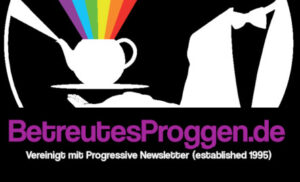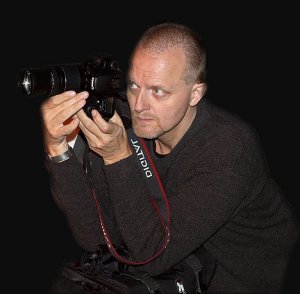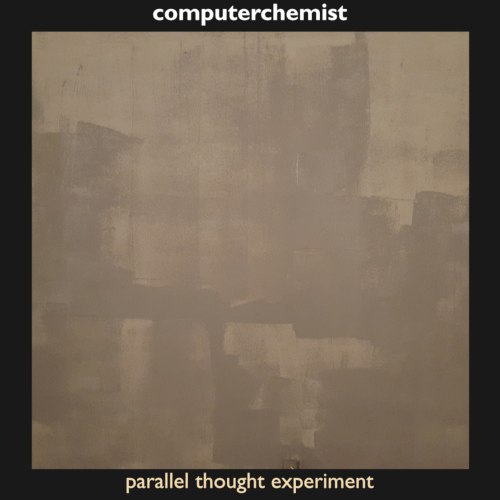Pure unadulterated neo-krautrock, guitar, bass and drum heavy instrumental music with lashings of mellotron and synth, a homage to the great early 70s German kosmiche rock.
This is not for the faint hearted. closer in feel and tone to “audio cologne project”, computerchemist is showing his rockier side in this release.
Label: Terrainflight TF017
Release Date: August 26, 2021
Track listing:
- triangle 09:16
- tonefloat blues 10:27
- it always sounds louder on the inside 09:56
- Em – Bm jam #1 10:34
- mellotron blues 08:00
- the fight 07:18
- b key blues 05:03
- time is a great healer, part VI 11:24
dave pearson: keyboards, bass & lead guitars, sound processing, sequencer & drum programming
artwork: original artwork by angiewoman
all composing, mixing and mastering in the digital domain at terrainflight hungary
between jul 2016 and aug 2021
written & produced ©℗ 2021 by dave pearson
thanks: my wife and family, and everybody else who has helped to encourage and support my music over the years
contacts:
terrainflight: info@terrainflight.com
dave: https://www.computerchemist.com
Reviews
John Shanahan – Hypnagogue

Heads up, musical bliss junkies. Computerchemist is back and he would like to blow your face out. On “Parallel Thought Experiment,” the artist’s 15th album, Dave Pearson unleashes the hounds of his krautrock and prog influences and…well…goes wild. The opener, “Triangle,” will leave you breathless with its charging-rhino adrenaline assault, replete with potent organ riffs that conjure the ghost of Jon Lord. “It Always Sounds Louder on the Inside” is a sonic kaiju stomping through your head, destroying everything in sight with hefty bass and snarling power chords, tempered to sensuality by a snaky, curling caravan of a melody. Big, muddy guitar straight out of Texas and Chicago meets synth chords in the unlikely–and, okay, slightly weird but in a good way–fellowship of “Mellotron Blues.” And on “Time is a Great Healer, Part VI,” Pearson offers an unabashed homage to David Gilmour in the slow-fire licks that close out this gritty, meaty, and absolutely fun ride.
— John Shanahan, Hypnagogue, 6th Oct 2021
Juergen Meurer, betreutesproggen.de (EN translation)

Recently, the album ”Masks”, released in September 2021, was discussed here, which showed a new facet of the British musician. But almost at the same time (just a month before) another album of his was released, this time not a collaboration , but a pure solo album:
Dave Pearson – keyboards / bass / guitars / sound processing / sequencer / drum programming
“Parallel Thought Experiment” is his 15th album, and it is miles away from his typically well-known Berlin School-influenced works. He doesn’t tread any new paths in electronic music here, no – he almost completely leaves this area in large parts of the album and lets off steam in another genre, namely his personal version of Krautrock. And so it is often not the keyboards that play the dominant role known from the early days, but the electric guitar. This approach was not a spontaneous idea, but something that the artist had been carrying around for a long time, as the eight compositions date from July 2016 to August 2021.
The opener ‘Triangle’ starts off with a bluesy guitar, until an organ is added and it becomes a typical Krautrock number. In the following ‘Tonefloat Blues’ he starts again in blues style with a shabby guitar, but Dave Pearson wouldn’t be the computer chemist if he weren’t able to incorporate mellotron sounds into this song as well, a typical feature of his music. In this case, it’s initially mellotron choirs that pop up from time to time, then later strings and flutes. The full program, then psychedelic organ playing and you notice that the keyboards finally got the upper hand here.
And so it goes on with herbaceous, psychedelic, spacy numbers with a very present lead guitar, but the same applies to the mellotron. It even goes so far that one piece was titled ‘Mellotron Blues’. Also beautiful.
The computerchemist has concocted something fine again, this time it’s… Kraut.
Rating: 10/15 points.
— Juergen Meurer, betreuesproggen.de, 8th Jan 2022 (google translate)
Stephan Schelle, musikzirkus-magazin (EN)

Two musical hearts beat in Dave Pearson’s chest. On the one hand it is the love of electronic music in the style of the “Berlin School”, on the other hand the multi-instrumentalist, who operates as a computer chemist, also has a soft spot for rock music. He has already proven that at the Audio Cologne Project together with Uwe Cremer and Zsolt Galántai and in his collaboration with Ray Sutton aka Radioray. His album “Parallel Thought Experiment” was released in 2021, on which he again strikes rocky tones that, as he says himself, point in the direction of neo-krautrock.
The fact that the album rocks shows which instruments are used. Dave plays alongside keyboards, bass, lead guitar and has programmed sequencers and drums.
Already in the 9:16 minute opener “triangle” unusual sounds emerge for Pearson’s solo album, because e-guitar and organ offer a reggae sound to which drums are added after a few moments. It all sounds very rocky and sounds like a band and awakens the spirit of 70’s rock.
The title of the 10:27 minute “tonefloat blues” says it all, because Dave presents a swampy blues rock rhythm here. This is maintained over the entire length and accompanied by flat synth sounds, which brings an additional psychedelic touch. Another element Dave adds that makes the track special are mellotron sounds that give the whole thing an extra electronic flair. It gets quite electronic towards the end when the blues rhythm dries up.
The almost ten-minute “it always sounds louder on the inside” also shows its rocking side. Heavy guitar licks and a fat bass come up here at the beginning, followed by spacey/psychedelic sounds of guitar and mellotron again after a little over a minute. From the middle of the piece, the synths then take over the sound, which is only adorned by the bass and occasional percussion.
A fat bass and again quite heavy guitar sounds start the 10:34 minute track “Em – Bm jam #1”. This track exudes a similar atmosphere as the previous “it always sounds louder on the inside” had. In the middle section, Dave lets the electric guitar sing along with some wonderful solos. And then there is also an eight-minute “mellotron blues”. Here Dave combines powerful blues rhythms with wide mellotron surfaces/harmonies.
After the spacy/rocking “the_fight” comes another five-minute blues track, “‘b’ key blues,” which features Dave playing a guitar that’s slightly Floydy in shape. A great slow blues. The album ends with the 11:24 minute “time is a great healer, part VI”, which is the most electronic piece on the album. Sequencer rhythm, pads and a wonderful e-guitar give you goosebumps.
Dave Pearson is a versatile musician who, as a computer chemist, not only releases electronic music. In addition to the projects mentioned above, in which he played rock music, he shows on “Parallel Thought Experiment” that he can also implement this style perfectly on his own. Here, however, Dave also walks several times in the blues area. A wonderful, versatile album.
Stephan Schelle, musikzirkus-magazin, December 2022
Juergen Meurer, betreutesproggen.de (DE)

Kürzlich wurde hier das im September 2021 veröffentlichte Album ”Masks” besprochen, das eine neue Facette des britischen Musikers aufzeigte. Doch fast zur gleichen Zeit (gerade mal einen Monat zuvor) ging noch ein anderes Album von ihm an den Start, diesmal keine Kollaboration, sondern ein reines Soloalbum:
Dave Pearson – keyboards / bass / guitars / sound processing / sequencer / drum programming
“Parallel Thought Experiment” ist bereits sein 15. Album, und dieses ist meilenweit von seinen typischerweise bekannten Berliner Schule geprägten Werken entfernt. Er beschreitet hier keine neuen Pfade der Elektronischen Musik, nein – er verlässt den Bereich in weiten Teilen des Albums beinahe komplett und tobt sich in einem anderen Genre aus, nämlich seiner persönlichen Version von Krautrock. Und so spielen auch oft nicht die Keyboards die von frühen Zeiten her bekannte dominante Rolle, sondern die elektrische Gitarre. Dabei war dieser Ansatz keine spontane Idee, sondern etwas, das der Künstler schon längere Zeit mit sich herum trug, denn die acht Kompositionen stammen aus dem Zeitraum Juli 2016 bis August 2021.
Auf dem Opener ‚Triangle‘ geht es gleich erst mal mit bluesiger Gitarre los, bis dann eine Orgel hinzukommt und es zu einer typischen Krautrock Nummer wird. Im nachfolgenden ‚Tonefloat Blues‘ startet er mit schrammeliger Gitarre wiederum im Blues-Stil, doch Dave Pearson wäre nicht der Computerchemist, wenn er nicht auch in diesem Song in der Lage wäre, Mellotronsounds einzubauen, ein typisches Merkmal seiner Musik. In diesem Fall sind es zunächst Mellotron-Chöre, die immer wieder mal kurz auftauchen, später dann auch Streicher und Flöten. Das volle Programm, dazu dann noch psychedelisches Orgelspiel und man merkt, hier haben dann schließlich doch noch die Keyboards die Oberhand gewonnen.
Und so geht es weiter mit krautigen, psychedelischen, spacigen Nummern mit sehr präsenter Lead Gitarre, doch Ähnliches gilt auch für das Mellotron. Das geht sogar so weit, dass ein Stück ‚Mellotron Blues‘ betitelt wurde. Auch schön.
Der Computerchemist hat wieder etwas Feines zusammen gebraut, diesmal ist es… Kraut. Bewertung: 10/15 Punkten.
— Juergen Meurer, betreutesproggen.de, 8th Jan 2022
Stephan Schelle, musikzirkus-magazin (DE)

In der Brust von Dave Pearson schlagen zwei musikalische Herzen. Zum einen ist es die Liebe zur elektronischen Musik im Stile der „Berliner Schule“, zum anderen hat der Multiinstrumentalist, der als Computerchemist firmiert, aber auch ein Faible für Rockmusik. Das hat er unter anderem auch schon beim Audio Cologne Project zusammen mit Uwe Cremer und Zsolt Galántai und bei seiner Kollaboration mit Ray Sutton aka Radioray beweisen. 2021 erschien bereits sein Album „Parallel Thought Experiment“, auf dem er wieder rockige Töne anschlägt, die, wie er selbst sagt, in Richtung Neo-Krautrock weisen.
Dass es auf dem Album rockiger zur Sache geht, zeigt schon, welche Instrumente zum Einsatz kommen. Dave spielt neben Keyboards, Bass, Leadgitarre und hat Sequencer und Schlagzeug programmiert.
Schon im 9:16minütigen Opener „triangle“ kommen für Pearsons Sololben ungewöhnliche Klänge auf, denn E-Gitarre und Orgel bieten einen Reggae-Sound in den dann nach wenigen Momenten ein Schlagzeug hinzugefügt wird. Das alles wirkt sehr rockig und klingt wie eine Band und erweckt den Spirit des 70’er Jahre-Rock.
Der Titel des 10:27minütigen „tonefloat blues“ ist Programm, denn Dave präsentiert hier einen swampy Bluesrock-Rhythmus. Der wird über die ganze Länge aufrecht gehalten und mit flächigen Synthiesounds untermalt, was eine zusätzliche psychedelische Note mit einbringt. Ein weiteres Elemente, was Dave hinzufügt und was den Track besonders macht, sind Mellotronklänge, die dem Ganzen ein zusätzliches elektronisches Flair geben. Zum Ende hin wird es dann recht elektronisch, wenn der Bluesrhythmus versiegt.
Auch das fast zehnminütige „it always sounds louder on the inside“ zeigt sich von seiner rockigen Seite. Hier kommen zu Beginn schwere Gitarrenlicks und ein fetter Bass auf, in die sich dann nach etwas mehr als einer Minute spacig/psychedelische Sounds von Gitarre und wieder Mellotron anschließen. Ab Mitte des Stückes übernehmen dann die Synthies den Sound, der nur noch vom Bass und gelegentlichem Schlagwerk verziert wird.
Ein fetter Bass und erneut recht schwere Gitarrensounds starten in den 10:34minütigen Track „Em – Bm jam #1“. Dieser Track versprüht eine ähnliche Atmosphäre wie es das vorangegangene „it always sounds louder on the inside“ aufwies. Im Mittelteil lässt Dave dann die E-Gitarre zu einem herrlichen Soli singen. Und dann kommt auch noch ein achtminütiger „mellotron blues“. Hier verbindet Dave druckvolle Bluesrhythmen mit weiten Mellotronflächen/-harmonien.
Nach dem spacig/rockigen „the_fight“ kommt dann mit „‘b’ key blues“ noch ein weiterer, fünfminütiger Bluestrack, bei dem Dave eine Gitarre spielt, die eine leicht floydige Form aufweist. Ein klasse Slowblues. Beendet wird das Album dann mit dem 11:24minütigen „time is a great healer, part VI“, dass das elektronischste Stück des Albums ist. Sequenzerrhythmus, Flächen und eine wunderbare E-Gitarre sorgen für Gänsehaut.
Dave Pearson ist ein vielseitiger Musiker, der als Computerchemist nicht nur elektronische Musik veröffentlicht. Neben den bereits oben erwähnten Projekten, in denen er Rockmusik spielte, zeigt er auf „Parallel Thought Experiment“ das er diesen Stil auch im Alleingang perfekt umsetzen kann. Hier wandelt Dave allerdings mehrere Male auch im Bluesbereich. Ein wunderbares, vielseitiges Album.
Stephan Schelle, musikzirkus-magazin, Dezember 2022
